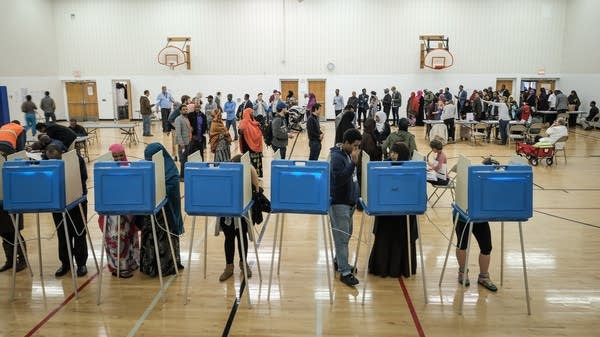Minnesota's August primaries may deliver high drama, big turnout

Voters cast their ballots at the Brian Coyle Community Center in Minneapolis on Nov. 8, 2016.
Caroline Yang for MPR 2016
Go Deeper.
Create an account or log in to save stories.
Like this?
Thanks for liking this story! We have added it to a list of your favorite stories.


